Mauritius Exemplifies Hinduism Like No Other African Country
Divine silhouettes that embody the most exquisite of Indian mysticism appeared one after another as I travelled from one city to the next in Mauritius. Even though it was a familiar stage, there was something uniquely magical about it!
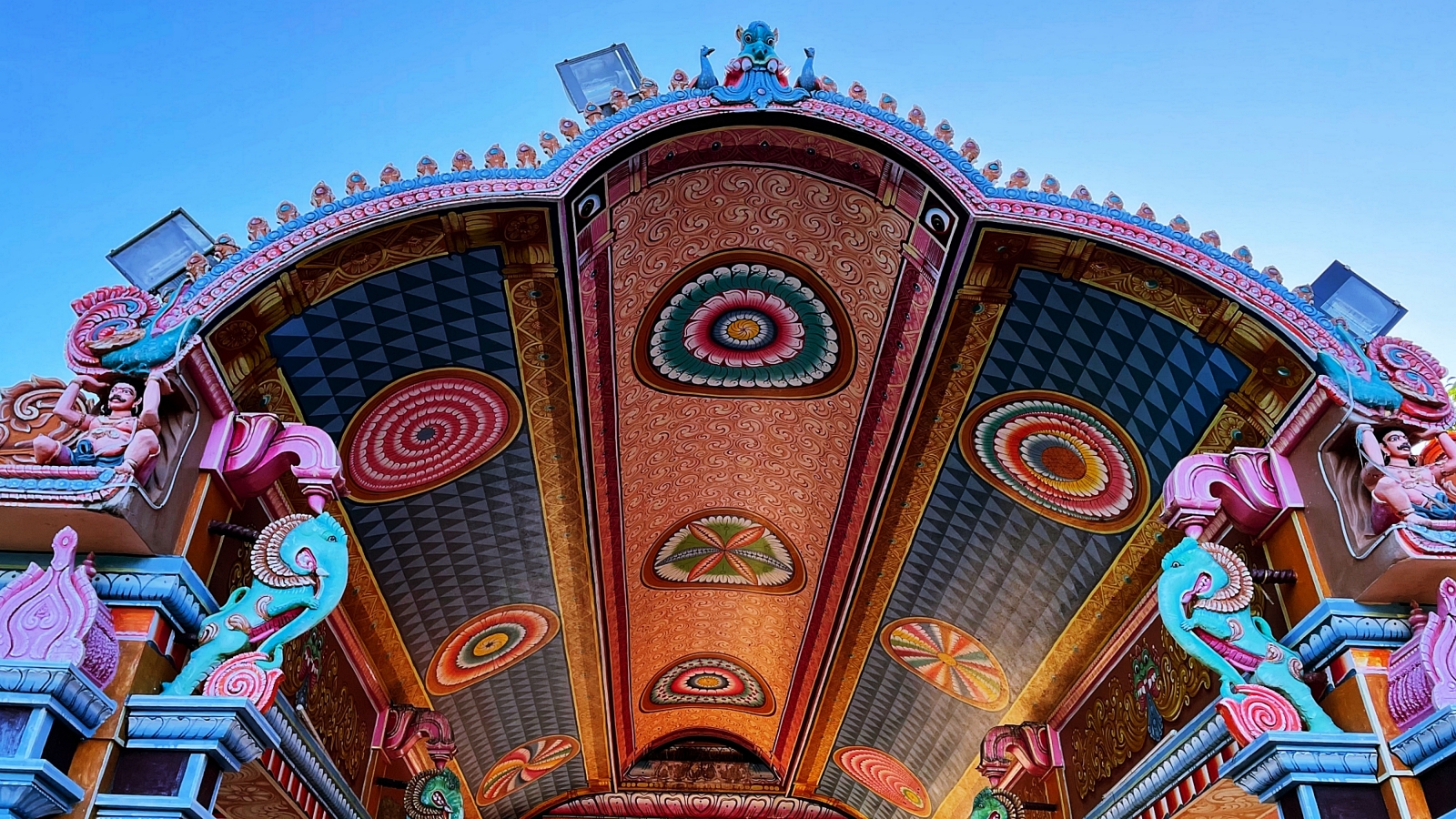
Located southeast of Africa and Madagascar, is Mauritius, an Indian Ocean island enshrouded in Indian sanctity. Mauritius burghers are ethnically and religiously varied, owing to its centuries of colonialism. But it is Africa’s only country where Hinduism is the most widely practised religion. On a recent trip across this idyllic island, I took a trip Tamarin, a coastal village known for its salt pans and dolphin watching; the restored Victorian mansion of Labourdonnais in Mapou, a north Mauritius village; and Port Louis, the ancient capital, dotted with tall buildings, yellow road signs, bustling markets, and, to my awe, colourful Hindu temples everywhere. However, the four I visited and have highlighted here – represent the pinnacle of Indian devotion in Mauritius.
Table of Contents
Durga Mata Statue
On an overcast afternoon in the first week of April, I visited the islands’ two tallest and revered statues; the 108-foot Durga Mata statue (the world’s tallest Durga statue); and the 108-foot Mangal Mahadev statue of the Hindu god Shiva standing with his trident at the outset of Ganga Talao, a crater lake in the Savanne District of Mauritius.
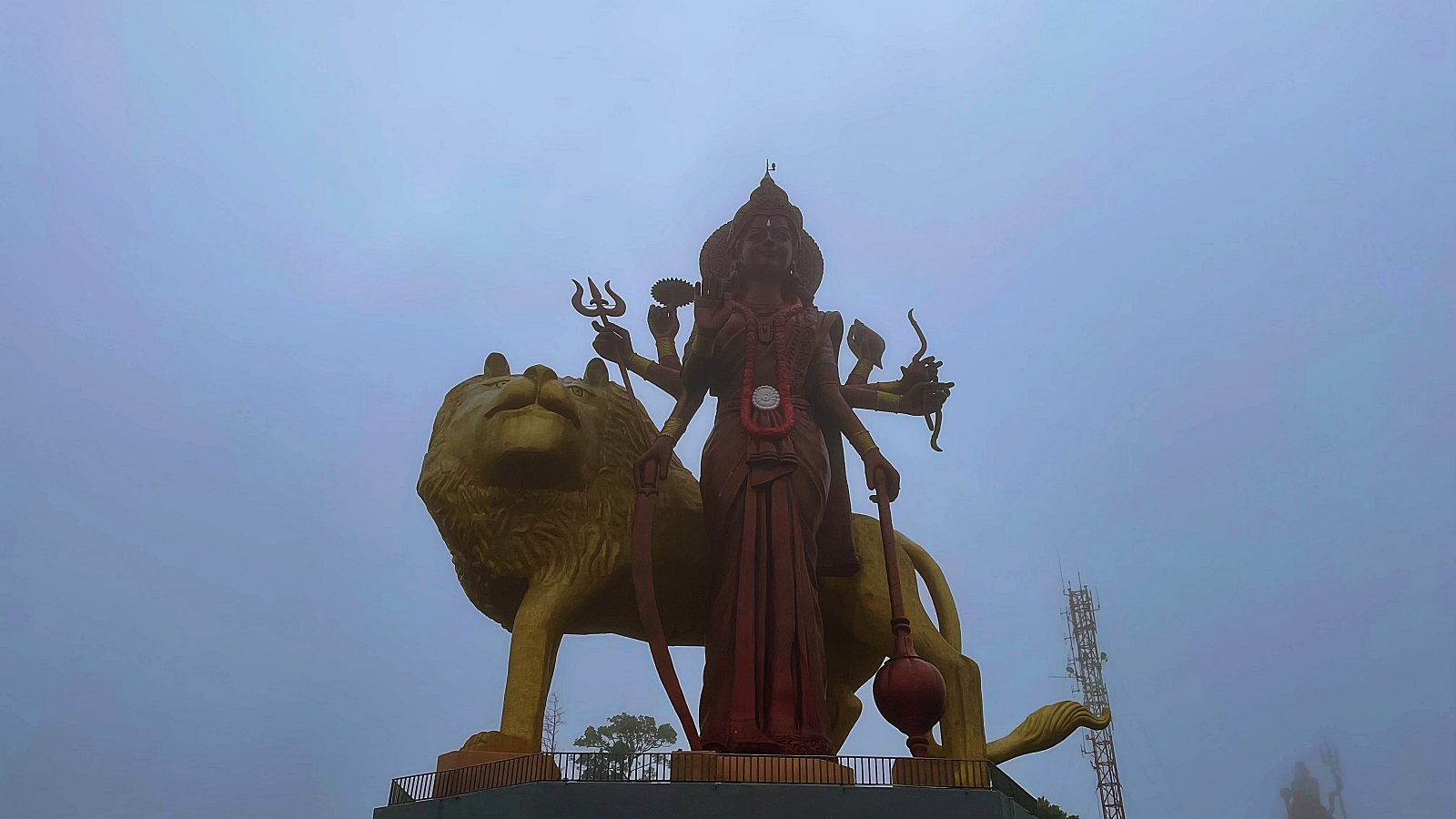
The gigantic Durga statue emerged in vivid tones of bronze, with her golden-coloured lion by her side, as the mist altered. Her eight hands wield a trident, a sword, a conch, a mace, a lotus, a thunderbolt, a serpent, and a flame, and she wears an orange garland around her neck. Maa Durga exerts these formidable weapons as she rides her lion to fight against evil. A little shrine rests at the foot of her statue, with a white flower sculpture on the hinder half of her torso.
Mangal Mahadev
Mangal Mahadev, Mauritius’ tallest statue and the island’s most sacred Hindu site, is located just across Maa Durga statue. At its apex, this colossal statue is a replica of the Shiva statue in Sursagar Lake in Vadodara, Gujarat, bringing it closer to Indian religious sentiments. Mangal Mahadev, similar to the Durga Maa statue, is also encased in hues of bronze and features a small shrine at its base where visitors can pray. Many visitors leave bananas and coconuts at the small Shivlinga at the foot of the monument, which attracts a significant number of Macaque monkeys. As I neared the Shivlinga, one Macaque gave me a whoop, fearing I might steal the coconut he was munching.
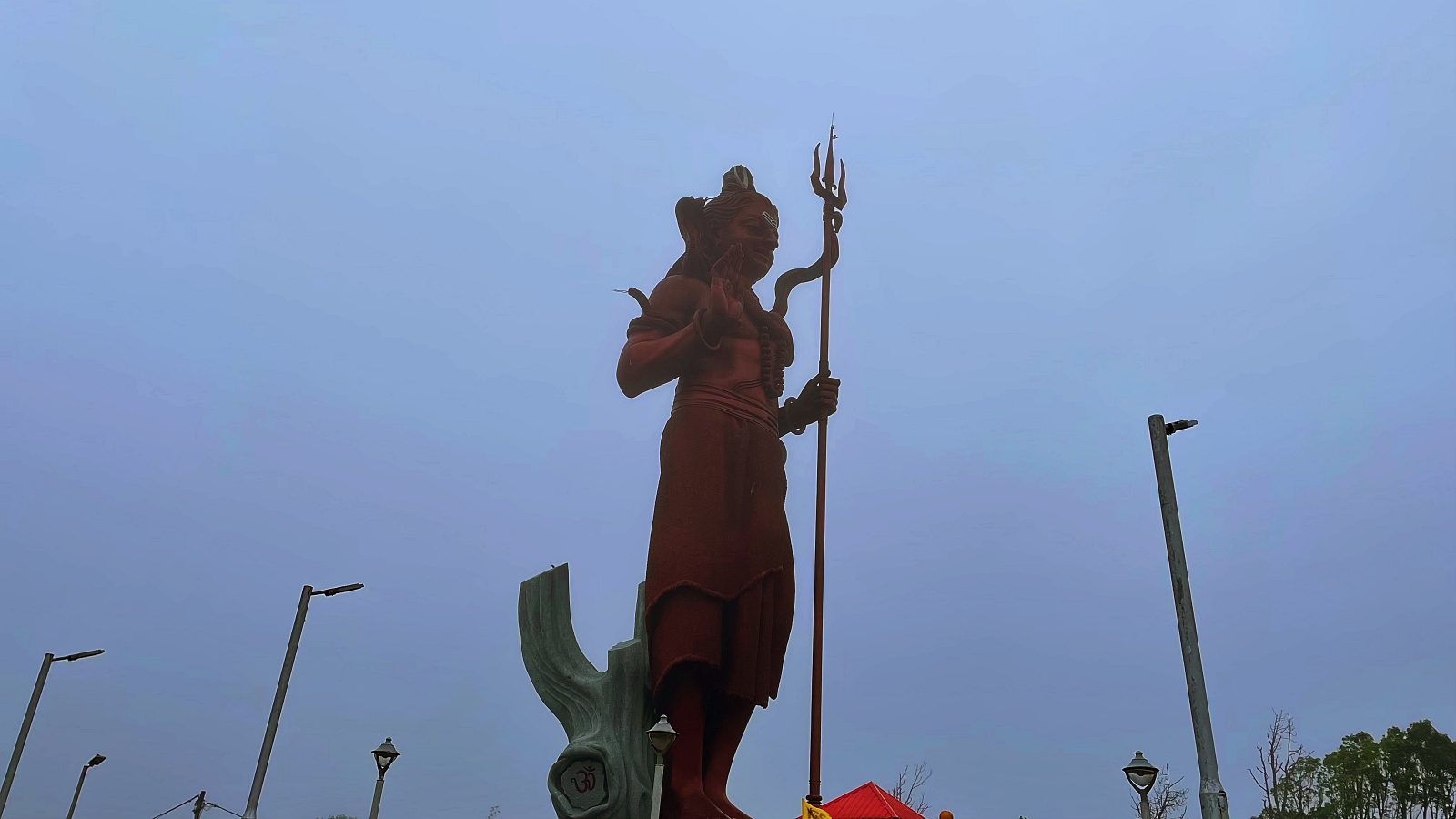
Temples dedicated to Gods such as Durga, Ganesh, Hanuman, and Lakshmi surround the Mangal Mahadev statue. Pilgrims in Mauritius go barefoot from their homes to the lake, which they believe is made of Ganga water, on Shivaratri and other auspicious occasions. This lake contains legends about Shiva and Parvati bringing water from the Ganges and spilling it where the lake now stands. Climb a trek to the Hanuman Temple for a breathtaking view of Mauritius while you’re here.
Ganga Talao or Pari Talao
The beautiful Ganga Talao temple is just a short walk from the Durga and Shiva statues. Although the entrance had been flooded by the rainwater during my visit, the canary yellow building on the opposing end shone out. The deep crater lake of Ganga Talao, or Grand Bassin, in the hilly province of Savanne, is Mauritius’ most sacred site. Ganga Talao implies “Lake of Ganga,” a metaphor for Grand Bassin’s association with the Ganges River in India. Meanwhile, according to folklore, the lake was originally known as Paritalao. At night, it was claimed that fairies would visit and dance here.
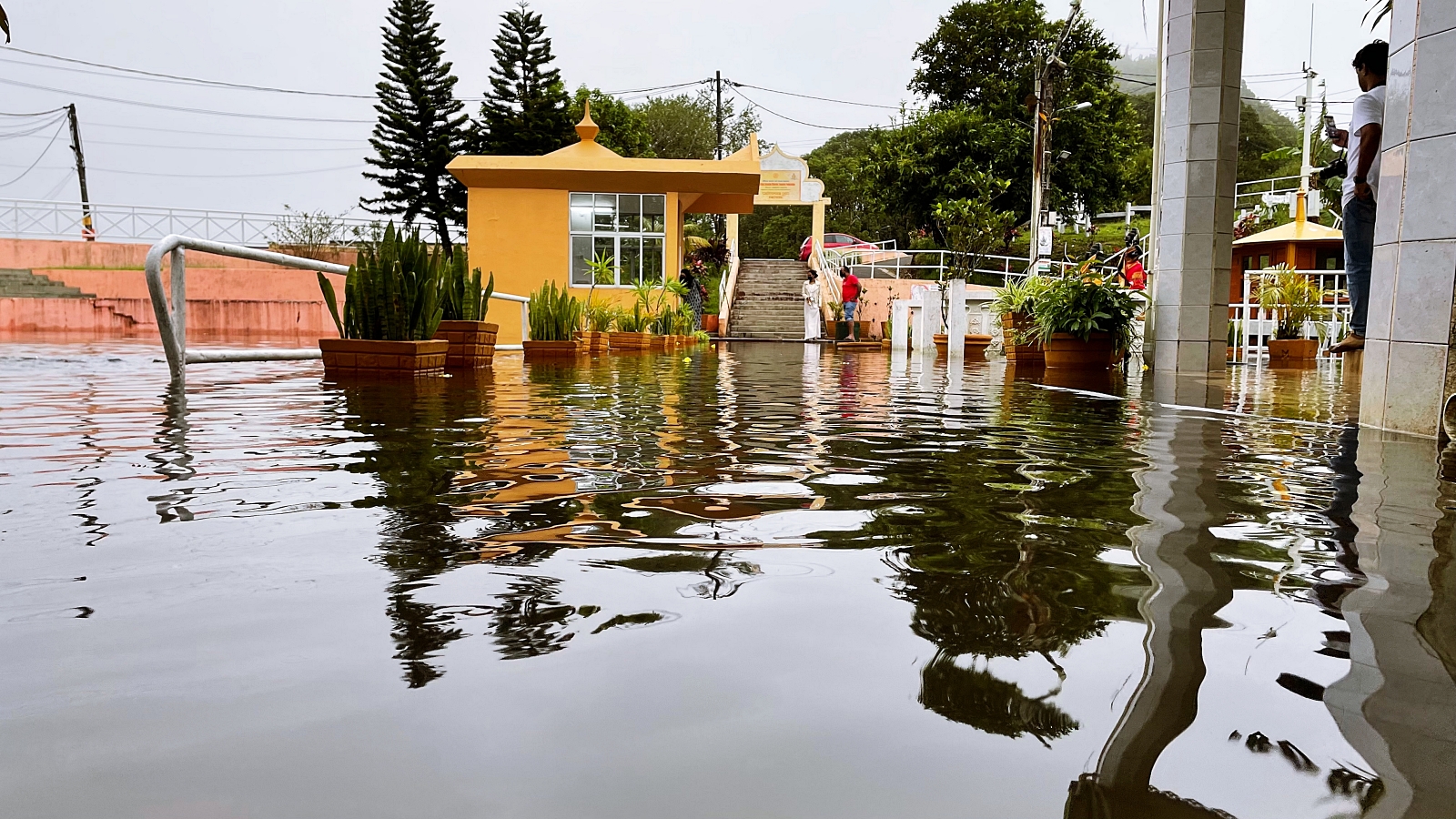
Prime Minister Ramgoolam christened Ganga Talao in 1972 and declared it a sacred lake in 1998 after transferring Ganga water from Gomukh and mixing it with the clean water already existent in Grand Bassin. The Shiv Mandir is on the lake’s perimeter. Minor shrines devoted to other gods are also along this shoreline. Many pilgrims came to pray or simply stroll around the lake, taking in the vista, while I was here. The temple staff briefed me about Pandit Sanjibonlal, who according to folklore, returned to Mauritius in 1866 as a trader, carrying a keepsake of Grand Bassin and Indian fabrics to sell to the local labourers.
He used the money to purchase Mr Langlois’ chateau in Triolet to convert it into the Grand Bassin pilgrimage site. Sanjibonlal had felt Grand Bassin’s divine pull through his stint as an indentured labourer, so he converted the existing edifice into a temple. He journeyed to India and returned with a gigantic Shivalingam and other statues for the Sanctorum. What’s fascinating is that this is Mauritius’ sole temple where Bhairo Baba and Shiva Parivar are both sanctified.
The contemporary design of this temple appears to have been influenced by artisans who worked on the Sockalingam Meenatchee Ammen Kovil in Port Louis. Pandit Giri Gossayne of Terre Rouge from Triolet led the first group of pilgrims to Ganga Talao in 1898. Eswarnath Shiva temple, the world’s 13th Jyotirlinga and the only Jyotirlinga outside of India is another wonderful landmark to visit in this neighbourhood.
Sockalingum Meenatchee Ammen Kovil
Sockalingum Meenatchee Ammen Kovil, a prominent Mauritian temple built in South Indian design and integrally related to Hinduism, a faith with Shiva and Meenakshi as its power couple – was the last I saw on my vacation to the island. Mauritius’ Sockalingum Meenatchee Ammen Kovil is one of the many temples on the island, but it is also one of the few dedicated to a female deity. The 130-year-old temple of Maheswarnath in Mauritius inspired this Kovil that boasts colourful statues of various sizes. The same artisans who assembled the Maheswarnath Temple also built the Sockalingum Meenatchee Ammen Kovil, popularly known as Kaylasson temple on Nicolay Road in Port Louis.
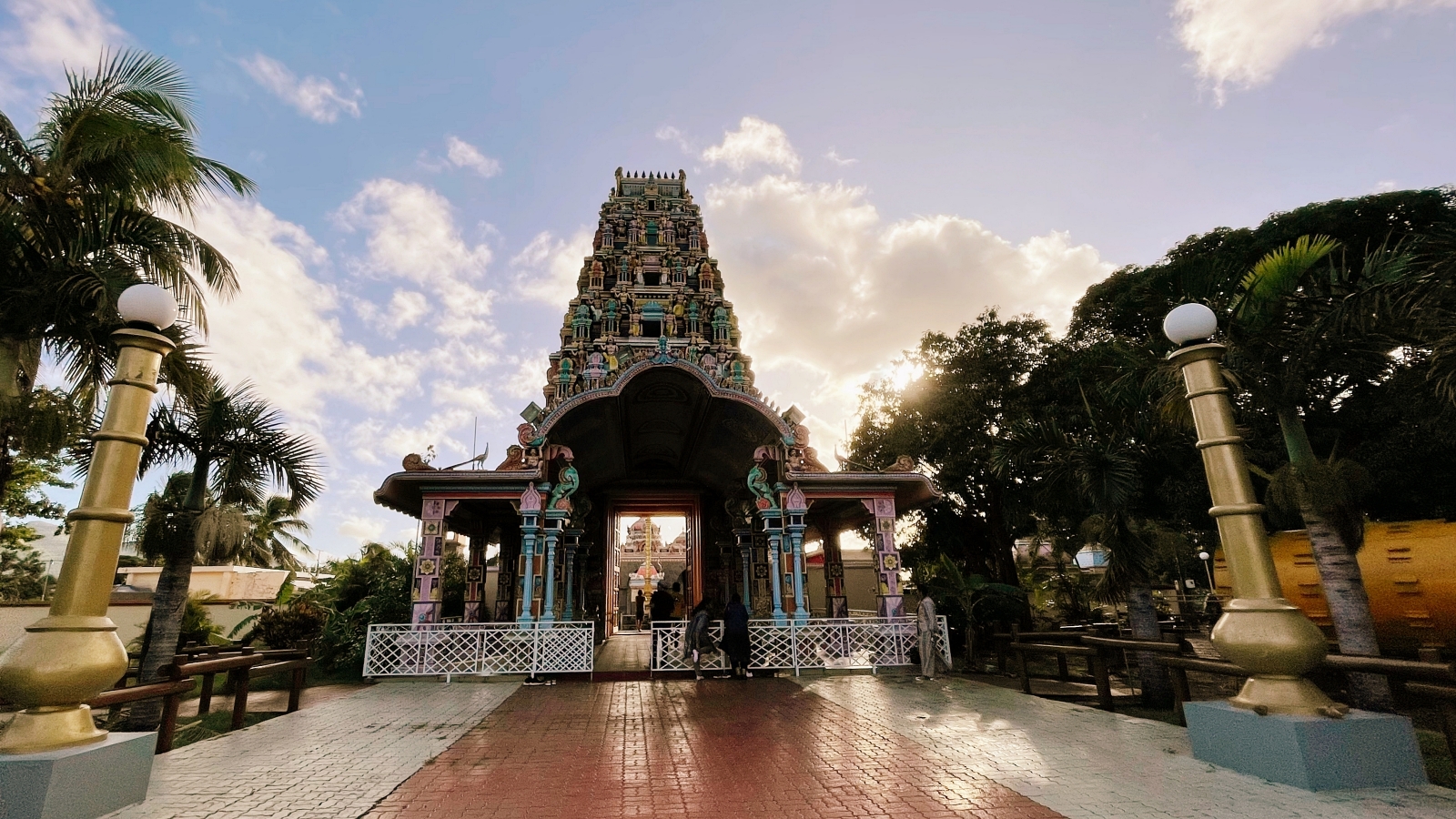
Following the island’s devastating cholera epidemic in 1854, Tamil industrialists in Port Louis arranged the construction of this temple. The temple was constructed in accordance with rigorous traditional guidelines and features six stations that represent the human body organs. The main temple and arcades were finished in 1860, and the vestibule in 1868. Sockalingum Meenatchee Ammen Kovil and Ganga Talao differ in several ways, despite their artisanal and religious connections. On the day I visited the temple, it was softly drizzling, so I got to view it in all of its vibrant splendour.
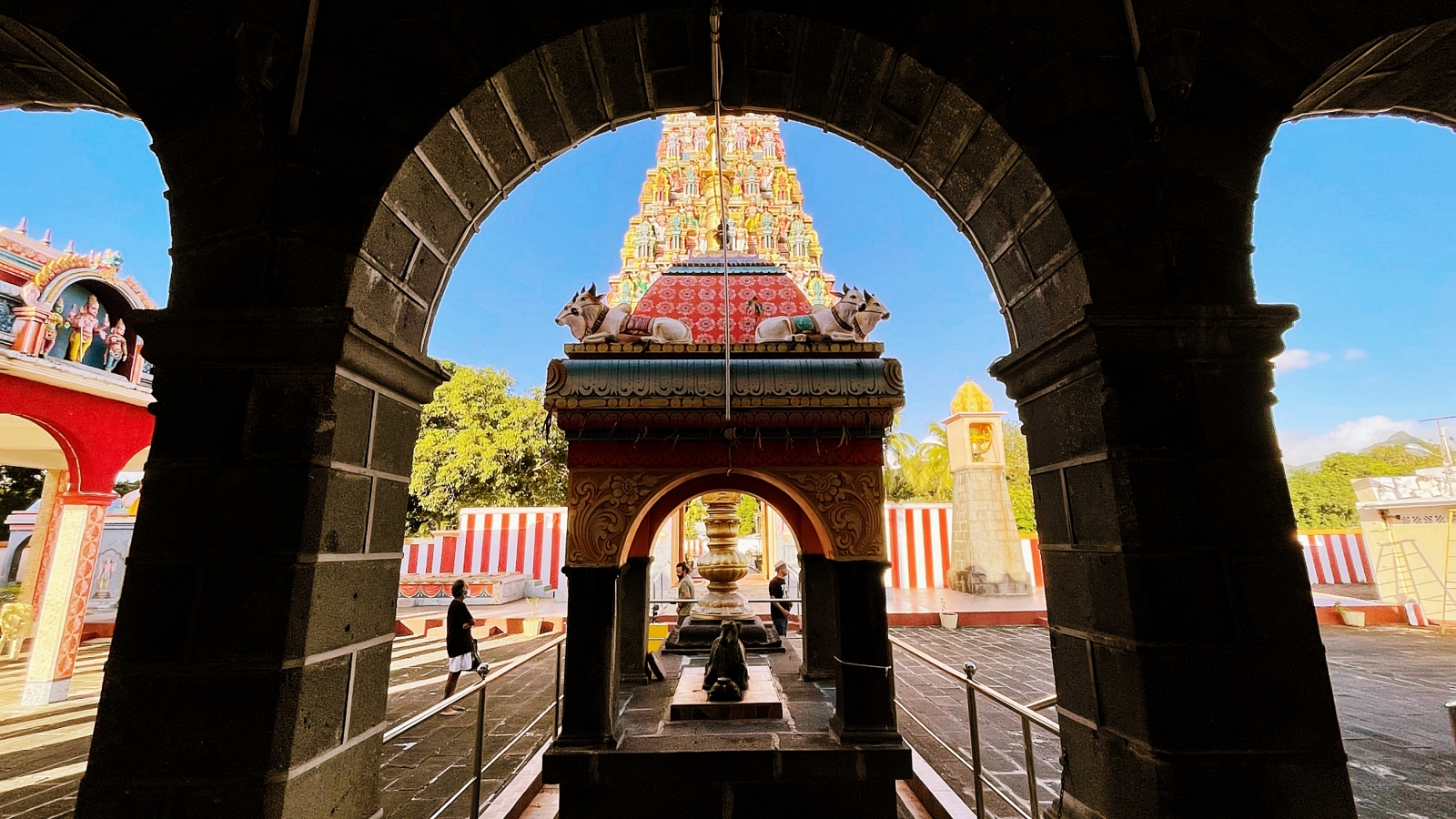
A white wrought iron fence encircles the Sockalingum Meenatchee Kovil, which is characterised by a tall Gopuram with multicoloured sculptural art of Shiva and Meenakshi in various avatars. Large golden fixtures, such as brass lamps, illuminate the path ahead. Two Veeran statues appear to be supporting the arched roof with their arms, and a Tamil folk deity in blue appears to be staring down at you from the centre. Two blue peacocks stand vigil over the blue deity. Blue elephant carvings can also be found halfway through the arches.
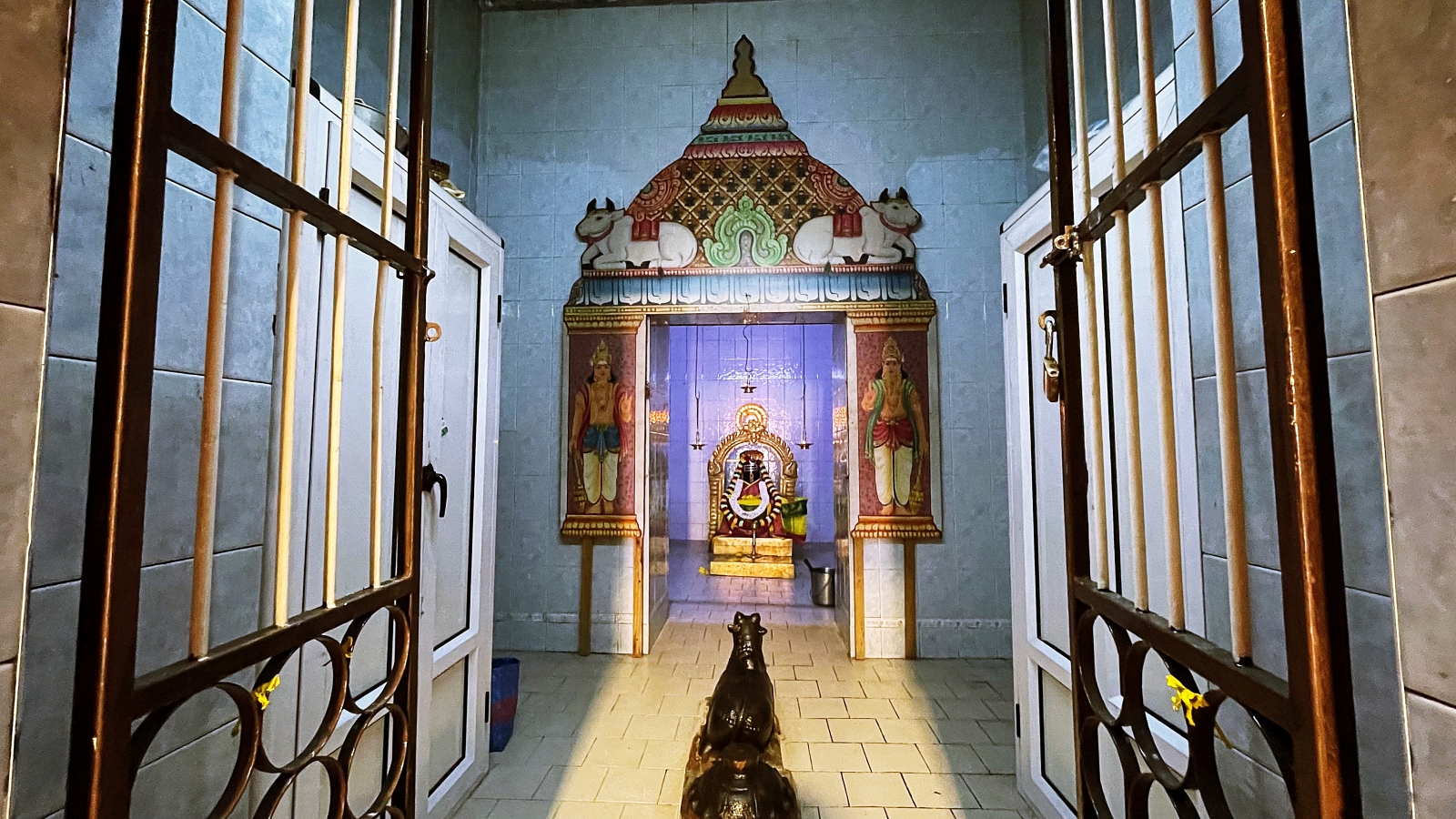
I stepped on stone blocks as I passed past the Gopuram gate. “Soo Aroomooga Chetty,” one of the forbears who contributed these stones, is etched in capital characters on one of the stone blocks. The Kaylasson temple is similar to the Tamil community’s cathedral. It is unique in that it is one of Mauritius’ oldest houses of worship. The temple’s interior is as vivid, with pink, blue, and green frescoes illustrating geometric and floral themes, and enormous statues of divinities in illuminated colours. Its Dravidian architecture intrigued me as much as the tranquil aura that calmed me.
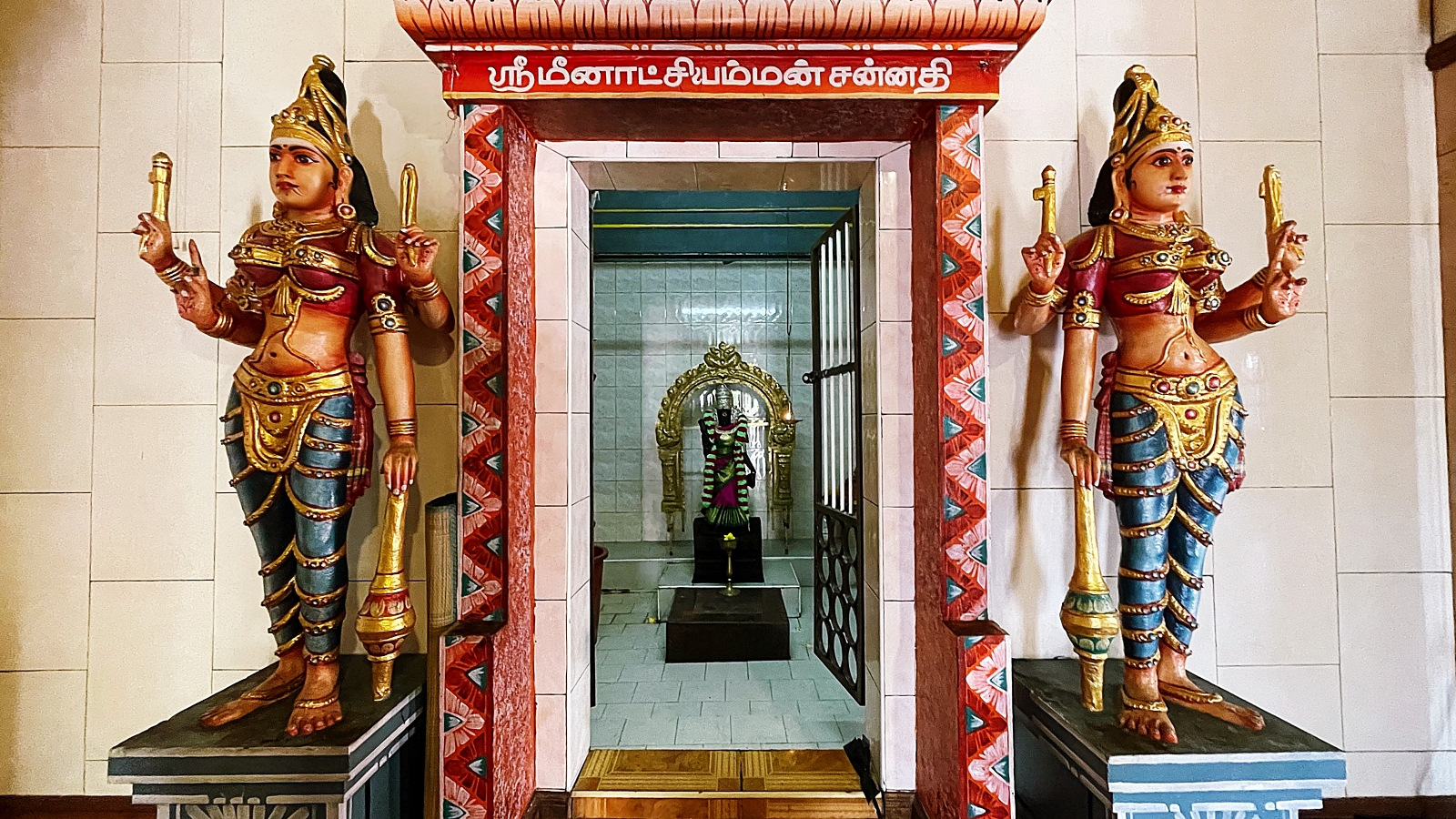
This Kovil has a perpetual freshness about it, with many fruit trees rimming the shaded courtyard. The Meenatchee Home, which accommodates about 50 boarders, a room where various events are held, and a school dedicated to the promotion of Tamil culture are also located on the property. Lord Shiva’s bull, Nandi, is placed in a small arched shrine area that faces the larger Sanctorum. Four white Nandi statues adorn the canopy of this small temple, while the Nandi on the altar is made of black marble. The shrines to Shiva and Meenakshi are located in the courtyard’s centre, where the deities’ idols are decked up for ceremonial prayers.
Several different brilliantly coloured deities adorn the front portion of the rooftop decorations. Lord Shiva’s prayers are offered in the main temple, which is located further down. Vishnu’s artwork flank the entryway on both sides. However, the main worship room is only accessible to priests. Lord Shiva’s bull, Nandi, is placed in a small arched shrine that faces the larger Sanctorum. Four white Nandi statues adorn the canopy of this small temple, while the Nandi on the altar is of black marble.
The shrines to Shiva and Meenakshi are in the courtyard’s centre, where the deities’ idols are decked up for ceremonial prayers. Several different brilliantly coloured deities adorn the front portion of the rooftop decorations. Vishnu’s artwork flank the entryway on both sides. However, the main worship room is only accessible to priests. The heavy iron doors opened, and a priest with an oil lamp entered. The Tamil chants, the fragrance of the flowers, everything was obscured by the incense smoke. Priest Somaskandan adds that the Kaylasson, like all Hindu temples, is shaped like a human body, with six stations representing various organs.
The God Shiva and Muruga can be found in the Artha Mandapam, the temple’s central room, among the deities depicted in this temple. Several shrines, including those dedicated to Maha Vishnou, Gopalkrishna, and Mariamman, popularly known as the Madurai Veeran, are visible through the temple. To the right, there is another room with a brass figure of Lord Krishna. The Gopuram, on the other hand, is one of Kaylasson’s most appealing elements. With its pyramid-shaped structure and bright statuettes, it protrudes into the landscape. When viewed from the inside, the Gopuram’s outer ceiling harbours two stars and one circle.
The temple’s four Vimanums (towers), which are of various shapes and sizes, are other features that make this place a Dravidian sculpting marvel. Engravings of peacocks, elephants and Karuppaswamy, a green-coloured Tamil guardian deity adorn the walls throughout. Knowing that multiple gods converge in this temple was reassuring. However, the quality of the temple which testifies to the outstanding astronomical observation which presided over its design ought to be pointed out. The sun darts its rays at Vinayagamoorthy, Sockalingum, and Soobramaniar at the same time during the equinoxes, a rare phenomenon that only transpires in three temples in Tamil Nadu.
The Kaylasson temple receives the most worshipers during the Thaipoosam Cavadee, one of the most important festivals in the Tamil calendar. The visit to this stunning Kovil concluded in what seemed like a heartbeat. The sun fell, the lights dimmed, and it was time to depart from the temple but this was a fantastic visit to get a feel of Indian culture in Mauritius.
Mauritius has a large number of important 19th-century Hindu temples as a result of the descendants of Indo-Mauritians who arrived in Mauritius to work as indentured servants on sugar estates after slavery was abolished in 1835. Regardless of the lamentable basis for their construction, visit these Hindu temples and their beautiful surrounds in a contemplative mood.
Where to stay:
The Oberoi Beach Resort in Mauritius has the nicest luxury villas with private pools on the island. This facility stands out for its luxurious villas and activities such as scuba diving, rum tasting, and sculptural art lessons. These accommodations feature a spacious bedroom and pleasant sitting space with a calming palette and plenty of natural light.
A king-size bedroom, a beautifully arranged living space with natural cane and bamboo furnishings, and a naturally lighted bathroom with a sunken marble bath are included in these 325 square metre thatched villas. Relax in your own heated swimming pool, sprawl out on a sun lounger, or take in superb sea views from the pavilion in the private courtyard garden. Throw in delectable cuisine that will leave you wanting more. The price of a villa with a private pool starts at €1,180 per night.



